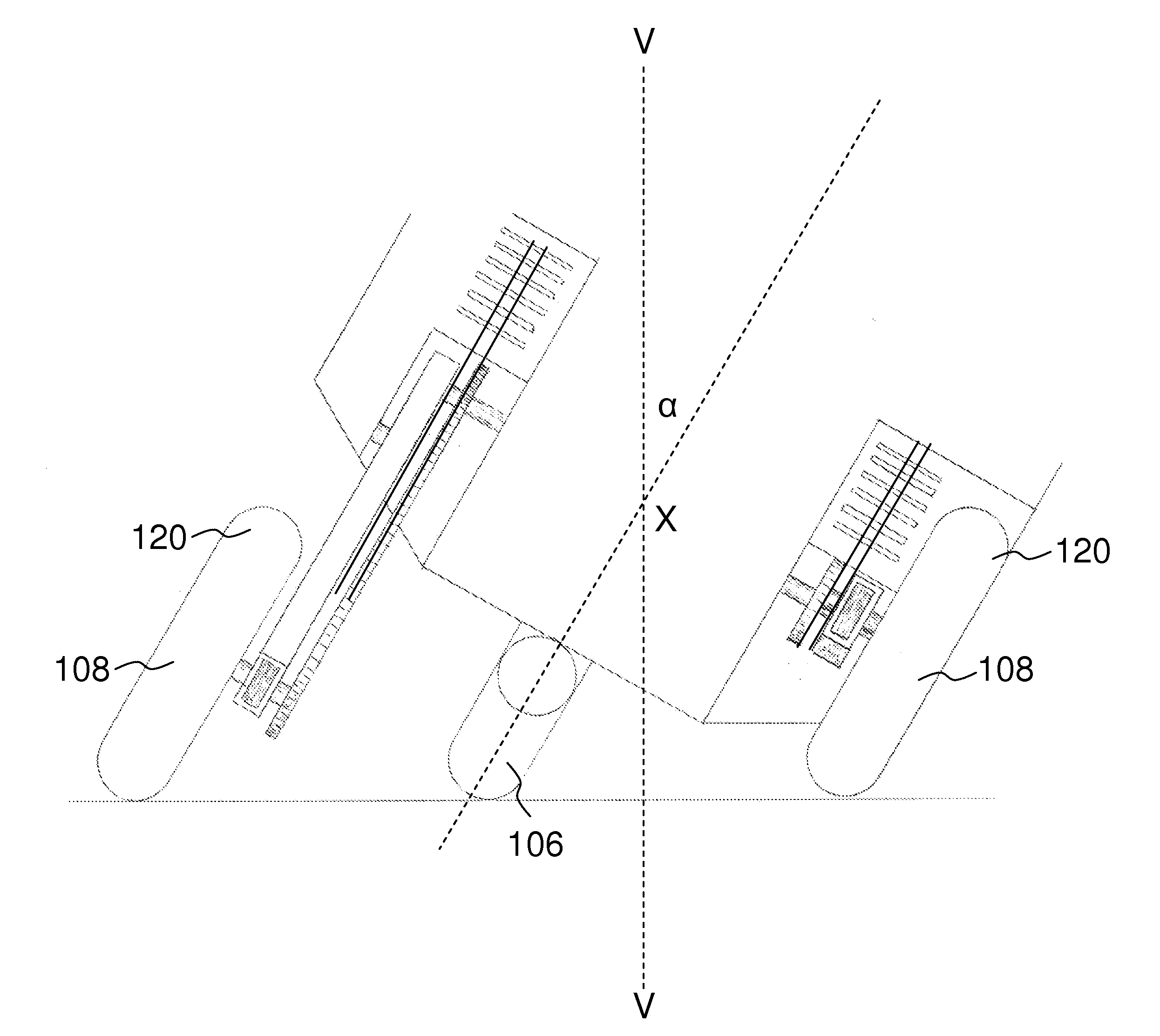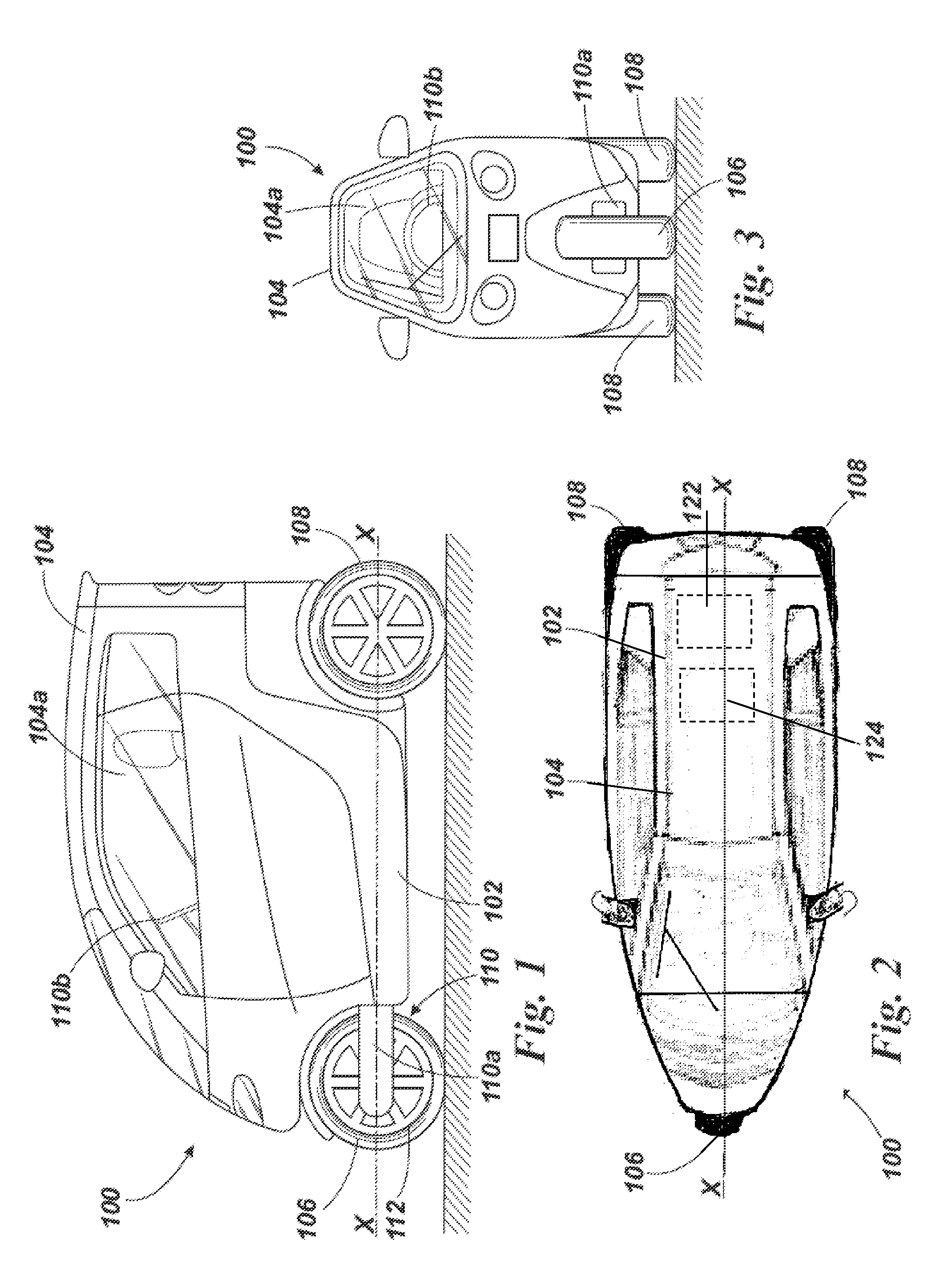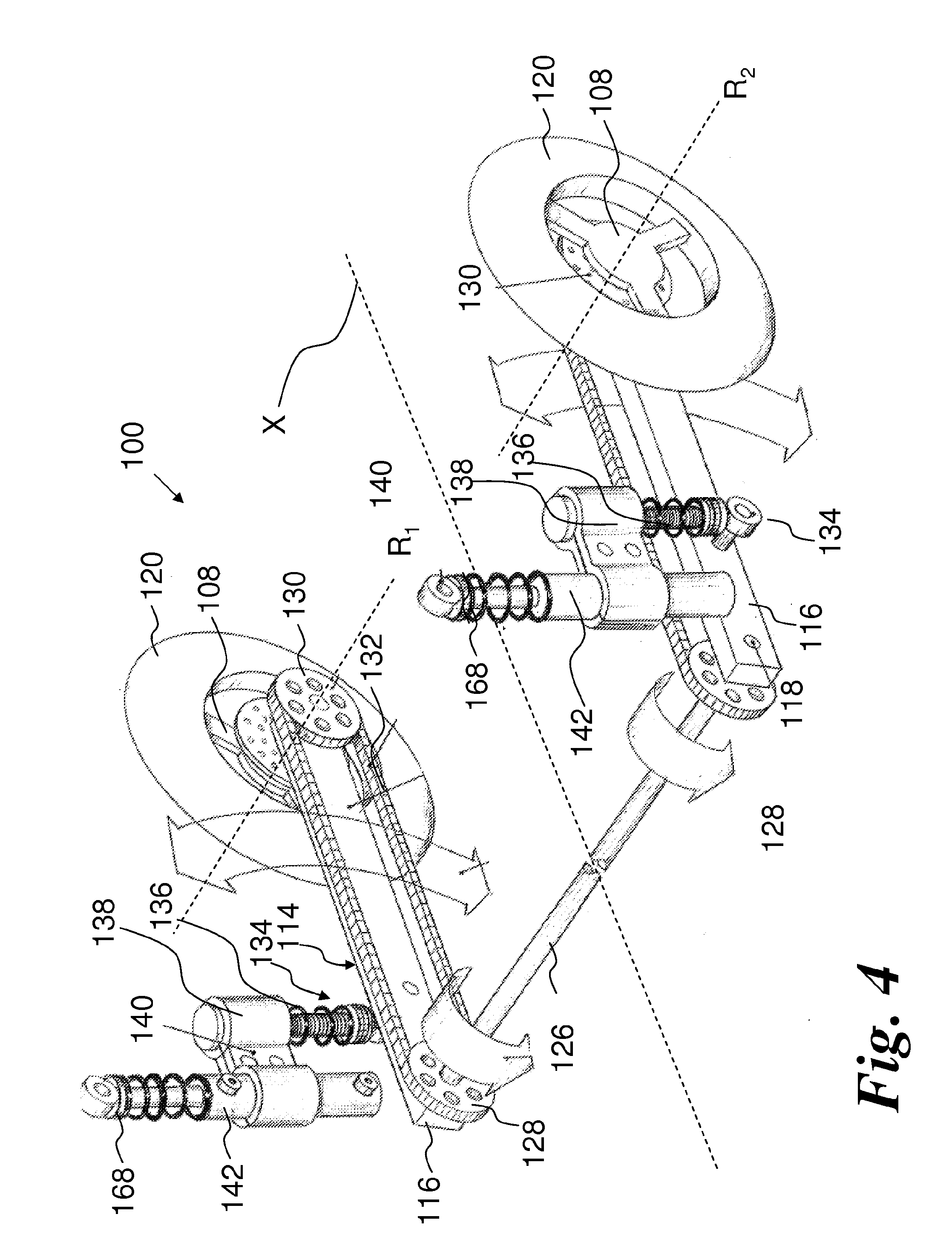System and method for vehicle chassis control
- Summary
- Abstract
- Description
- Claims
- Application Information
AI Technical Summary
Benefits of technology
Problems solved by technology
Method used
Image
Examples
first embodiment
[0154]FIG. 20 shows a steering arrangement 550 in which two front wheels 552 are provided. The two front wheels 552 are able to steer, tilt and castor as for the previous steering arrangements 300, 400, 500 comprising only a single front wheel.
[0155]The steering arrangement 550 comprises a central member 554 which is arranged to rotate about an axis R1-R1 lying parallel to the axis X-X shown in FIGS. 1 and 17. The central member 554 is arranged to rotate with the remainder of the chassis 102 of the vehicle 100. The central member 554 may be an integral part of the chassis 102, or may be connected thereto.
[0156]Attached to the central member 554 are four A-arms or wishbones 556. Two wishbones 556 are located on opposing upper sides of the central member 554 and are connected to the central member 554 by hinges 558. A further two wishbones 556 are connected to the central member 554 at opposing lower sides of the central member 554. In other words, a pair of wishbones 556 extends away...
second embodiment
[0159]FIG. 20 shows a steering arrangement 600 in which two front wheels 602 are provided. The two front wheels 602 are able to steer, tilt and castor as for the previous steering arrangements 300, 400, 500 comprising only a single front wheel. The steering arrangement 600 comprises a central member 604 which is arranged to rotate about an axis R1-R1 lying parallel to the axis X-X shown in FIG. 1. The central member 604 is arranged to rotate with the remainder of the chassis 102 of the vehicle 100.
[0160]Attached to the central member 604 are four A-arms or wishbones 606. Two wishbones 606 are located on opposing upper sides of the central member 604 and are connected by hinges 608. A further two wishbones 606 are hinged at opposing lower sides of the central member 604. In other words, a pair of wishbones 606 extends away from each side of the central member 604. The wishbones 606 connect at their distal ends to wheel hubs 610 which are connected to the wheels 602.
[0161]The steering...
PUM
 Login to View More
Login to View More Abstract
Description
Claims
Application Information
 Login to View More
Login to View More - R&D
- Intellectual Property
- Life Sciences
- Materials
- Tech Scout
- Unparalleled Data Quality
- Higher Quality Content
- 60% Fewer Hallucinations
Browse by: Latest US Patents, China's latest patents, Technical Efficacy Thesaurus, Application Domain, Technology Topic, Popular Technical Reports.
© 2025 PatSnap. All rights reserved.Legal|Privacy policy|Modern Slavery Act Transparency Statement|Sitemap|About US| Contact US: help@patsnap.com



